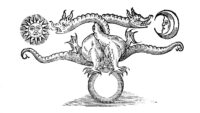 Morphology, the study and comparison of form, is one method used by scientists and naturalists to classify plants and animals into Genus and Species. By determining physical structures as unique to a particular organism, one species of organism can be differentiated from other members of its family. Rare species of toothed whales and dolphins for which a living specimen has never been observed are classified on the basis of the form and structure of their teeth, often the only evidence available. Paleontologists classify fossil species using morphology.
Morphology, the study and comparison of form, is one method used by scientists and naturalists to classify plants and animals into Genus and Species. By determining physical structures as unique to a particular organism, one species of organism can be differentiated from other members of its family. Rare species of toothed whales and dolphins for which a living specimen has never been observed are classified on the basis of the form and structure of their teeth, often the only evidence available. Paleontologists classify fossil species using morphology.
Though neither living plant nor animal, capitalism can also be classified by its morphology. Viewed as a genus or economic family, the morphological differences within the capitalist genus then allow the identification and definition of each particular capitalist species, of which there are and have been many.
All species of capitalism are monopolistic, which is to say predatory in nature, and all attempt to “corner the market” in whatever social niche from which they arise. Like T-Rex, capitalism strives to vanquish competition and establish itself as the all-powerful force, a cannibalistic super-predator. In addition, capitalism requires the fictive transformation of land, labor and money into price-based, transferable commodities. The point of all capitalist species is hegemonic power conferred through wealth creation and accumulation.
Classified by the morphology of their particular social and financial forms, species of capitalism have included Mercantile Capitalism, State Capitalism, War Capitalism, Industrial Capitalism, Consumer Capitalism, Financial Capitalism and the newest species, Cyber Capitalism. These are not exclusive to each other; multiple forms of capitalist species can and do exist simultaneously. As biologically ontogeny recapitulates phylogeny, so earlier forms of capitalism are displayed in later forms.
Mercantile Capitalism, an early species, is defined by the presence of small investors and the small-scale use of debt to finance production and trade. Regional cotton and cloth production and trade, for example, were products exhibited by Mercantile Capitalism in the Islamic and non-western world centuries before Europeans abandoned wearing animal skins.
State Capitalism is distinguished by the morphology of government control of currency, economy and finance. Products are produced, distributed, sold and regulated by the state rather than by individual producers/investors.
War Capitalism displays the morphology of geographical military conquest and subsequent expropriation of land, subjugation, genocide or slavery of populations, and extraction of resources or technology. England, for example, utilized War Capitalism to build its navy and global empire upon which “the sun never sets.”
Industrial Capitalism is the species identified by massive private investment, corporatism, and the imposition of mechanization as an adjunct or replacement for human labor. Support of the state politically and militarily is often present. Various species of Industrial Capitalism remain active around the globe.
Consumer Capitalism’s morphology includes voracious and every-growing consumption of products and wide-spread extension of interest-bearing personal credit. A vast sub-species of influential marketing and consumer research supports Consumer Capitalism.
Financial Capitalism is marked by the lack of dependence upon production of physical product whatsoever; in this species, money becomes product through its transformation into pure financial instruments existing independently of material reality. Currency trading, derivatives, and bundled sub-prime mortgage bonds are all examples.
Cyber Capitalism, the newest species on the planet, produces and generates wealth and power from information; data is simultaneously resource and product. Data-mining, cyber-tracking and determining meta-trends are distinguishing morphological characteristics; the NSA and Google are representative examples.
Sensory Capitalism will be the next and final species; its predatory morphology will include the use of Virtual Reality, direct brain stimulation, and Artificial Intelligence combined with manufactured experiences to create an “affective economy” to control and manipulate people.
If our planet survives the above – a big if – commodified land, labor, money and ultimately the Genus of Capitalism itself will eventually be absorbed within a unified holographic landscape; humanity as we know it will disappear, replaced by a global metaphysical reality called KYAB (Kiss Your Ass Goodbye): the morphology of a single consciousness.





The fundamental assumptions of Natural Capitalism are as follows:[3]
The limiting factor to future economic development is the availability and functionality of natural capital, in particular, life-supporting services that have no substitutes and currently have no market value.
Misconceived or badly designed business systems, population growth, and wasteful patterns of consumption are the primary causes of the loss of natural capital, and all three must be addressed to achieve a sustainable economy.
Future economic progress can best take place in democratic, market-based systems of production and distribution in which all forms of capital are fully valued, including human, manufactured, financial, and natural capital.
One of the keys to the most beneficial employment of people, money, and the environment is radical increases in resource productivity.
Human welfare is best served by improving the quality and flow of desired services delivered, rather than by merely increasing the total dollar flow.
Economic and environmental sustainability depends on redressing global inequities of income and material well-being.